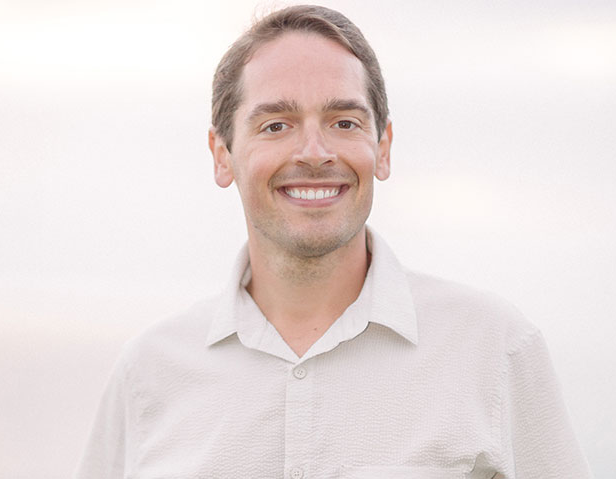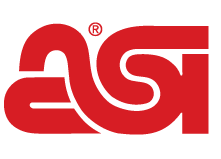Screenbroidery (asi/305623) started in 2008 with founder Tom Rector working out of his living room selling T-shirts. Today the Indianapolis-based distributor offers a suite of services that include print automation, fulfillment, web stores, apparel decoration and a full gamut of branded merchandise solutions. The growth comes from what Rector describes as “customer obsession.”
“The ability to listen to your customer and understand what their needs are,” he says, “will always force your organization to evolve and adapt to the market.”
Meanwhile, Thumbprint (asi/293564) was founded 30 years ago by Greg Gill as a printing company, and now provides advanced technology, print automation and fulfillment capabilities. The company prides itself on building deep connections to uncover its clients’ business challenges and solve them, beyond what services the Orlando-based distributor already offers. “That’s when we start stretching beyond what we’ve known ourselves to be over the years,” says Brian Gill, president of the company and the son of Greg, “and find out how we can grow as a company to meet our clients where they need us to be.”
of companies struggle to adapt quickly to market changes
(Quantive – The Global State of Strategy 2024)
In January, Screenbroidery purchased Thumbprint, creating a joint company with $36 million in projected revenue this year. (Screenbroidery is taking Thumbprint’s name, with Brian Gill assuming the role of chief revenue officer.) A passionate customer-focused mindset was one of the key synergies that led to the deal. So was another quality, essential to how both companies had remarkably evolved: the ability to adapt.
Change is a necessity in business – a lesson that promo companies were most viscerally reminded of during the pandemic. But it’s not simply a matter of preparing for a once-in-a-lifetime catastrophe (though that’s important too). It’s truly about embracing adaptability all the time – constantly improving and evolving to thrive in an ever-changing market. “I’m so tired of the word pivot,” says Jo-an Lantz, CEO of Counselor Top 40 distributor Geiger (asi/202900) and a member of the Counselor Power 50 list. “It was such a cliche during COVID and it was overused. ‘Pivot’ just means a 180-degree turn. ‘Adapt’ is how people and businesses sustain their organizations. You have to adapt to the changes in the environment around you, but you don’t change your core beliefs – those things that are true to your organization.”

What’s the Defining Trend of the Next Five Years?
“A shift in leadership. Our industry is at an inflection point. The way we work, collaborate and create is changing, and the leaders who guide us through this transformation will define its success. This shift isn’t about replacing the past but building on the expertise and dedication of long-standing leaders.” Joseph Sommer, Whitestone (asi/359741)
Think about the way the promo and print industries have evolved in the past five, 10, 25 or even 50 years. To last that long – not just surviving, but succeeding – companies must consistently adjust.
Sticki, a Vista, CA-based print, packaging and promo company founded in 1998 by Scott Thurman, started out selling multi-part business forms. When digital technology made those items obsolete, the company (then known as International Printing Solutions, or IPS, until it rebranded last year) moved into other revenue streams, including computer program packaging. That didn’t last either. Thurman recalls when an IPS employee was sent out to purchase the latest Adobe software program – and couldn’t find it in any store. Digital software downloads were just about to take off. With the writing on the wall again, Thurman’s company changed course once more and expanded into food and cosmetics packaging. It was another example of what economists and business leaders call “creative destruction,” where new innovations cause existing methods and products to become outdated. “Creative destruction,” says Thurman, “caused us to adapt.”
The Right Attitude
Thanks primarily to AI, the promo and print industries are standing on the edge of a paradigm shift. With significant innovation promised in the next five years and beyond, the time is ripe to prepare to adapt – though in truth it’s never too late to build the foundation.
Market Forces Driving Business Decisions in the Next 3-5 Years
When we surveyed attendees of the 2024 ASI Power Summit, cybersecurity and consolidation were top of mind.
It starts with a proper mindset. For Maria DeLorenzis Reyes, an executive coach and the founder/CEO of MDR Brands, adaptability for promo companies means not only being agile in the face of changing conditions, but to look at those moments as opportunities instead of obstacles. “Even when it’s bad, there’s always opportunity,” she says.
Significant change has been on the mind of Matthew Lamb since he joined Brandability (asi/319940) as CEO two years ago. An industry veteran who spent over a decade and a half at Facilisgroup, he’s taken the established family distributorship through a forward-looking overhaul that included a rebrand (from its former name of Scarborough Specialties), an acquisition, national expansion and the beginnings of a digital transformation. Essential to the process is exploring the company’s identity and how it should redefine itself. “Talking to team members across the company, I asked ‘What qualities are important as we think about the future?’” says Lamb. “Curiosity, determination, being open all come to mind for me, and there’s an element of humility too. If you think you have the world figured out, you might not be asking others the right questions.”
Change is hard, especially when there’s a track record of success. Thurman jokes that he and the Sticki sales guys are “long in the tooth.” But the company has gone all-in on digital with a front-end presence that integrates with the company’s new ERP system, allowing customers to easily place their orders and access their information online. It’s been a marked shift for the company he says, especially internally where previously everyone worked in their own silos. But the Sticki team has embraced it even if it’s been far from easy. “Change certainly doesn’t come without hiccups,” he says, “but we’ve also been a very nimble organization.”
Improvement & Communication
Being open to change is one thing, but acting decisively, implementing thoroughly, and ensuring the entire team is on board is another challenge altogether. “Where companies get it wrong is where it’s just words,” says DeLorenzis Reyes, who has worked with over 1,600 clients, including all four major TV networks. “It’s not really their operating system, it’s not really their values. And then it just it just falls flat.”
How can companies practice what they preach? One effective method is through “continuous improvement.” While dramatic developments may occasionally necessitate a complete change in direction, more often, companies can engage in an ongoing process of incremental improvements to achieve long-term goals. Geiger, for example, outlines its strategic goals in six-year increments and breaks it down further into one- and three-year priorities with progress that can be measured. Lantz says it’s a reflection of continuous improvement and agile thinking. Adds DeLorenzis Reyes, “Continuous improvement is something that I preach, and the companies I see thrive are the ones that have that embedded and baked into their operating system.”

What’s the Defining Trend of the Next Five Years?
“I expect there to be ramped up consolidation in the industry through capital that’s poured in. There’s going to be a lot more service providers and technologies. Those who are on the cutting edge are really going to win, and those who bury their heads in the sand are going to get left behind.” Matthew Lamb, Brandability (asi/319940)
Pulling together teams to accomplish those goals is not always easy. Lantz says companies adapt due to two types of conditions: external and internal. “Internal is actually far more difficult,” says the former Counselor Person of the Year, “because with external there’s usually some sort of crisis that forces you to change.” With internal conditions, the urgency may be lower, necessitating more communication to illustrate the need for change. “The first thing people ask is ‘Why?’” Lantz says. “’Why do we have to change?’ So we have to have a really good reason for the why. You need to have a clear explanation of why we’re going to do this.”
Improvement can take many forms. Throughout its 30-year history, Thumbprint has been an early adopter of technology, including being one of the first promo companies to offer digital storefronts. However, it had to show its team that innovation encompasses more than just technological advancements. “I had people in my shipping and accounting department saying ‘How can I be innovative?’ They always thought it came down to technology,” says Gill. “So when we started talking about innovation, we really had to define it to everyone so that they felt like they could participate.”
And it’s crucial that everyone play a part. “One of our keys is getting everybody bought in. You can’t force people,” says Lamb. “To do this, it’s got to be cultural shift from every layer of the company.”
